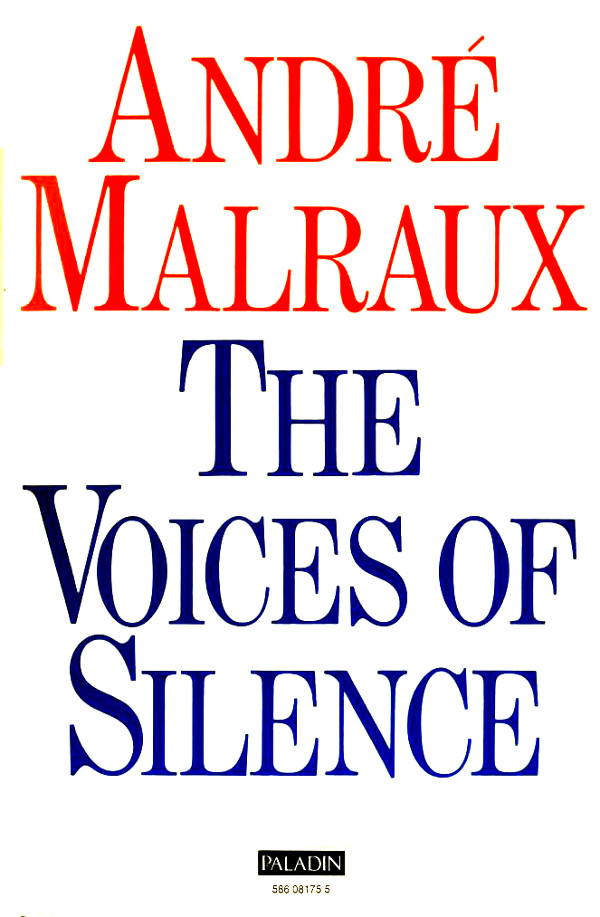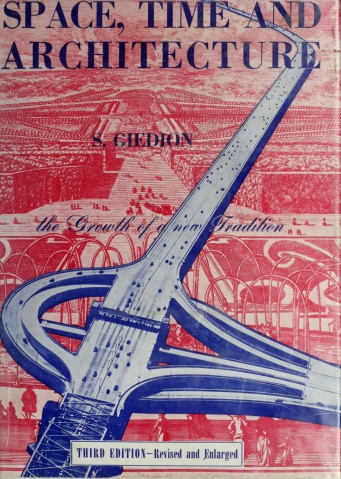André Malraux: The Voices of Silence (1951–)
Filed under book | Tags: · art history, art theory, museum, painting, philosophy of art, photography, sculpture

“This is not a history of art, but a work on the sculptor’s and painter’s arts of the world by a passionate art lover. The organization is by ideas; the illustrations are drawn from all peoples, countries, and times. Each picture is placed within a page or two of its discussion in the text. As an idea develops, the places and periods of its illustrations wander. The coherence is an inward one, not one of objective order.
Malraux starts from the premise that with the broadening of our knowledge of the world, and especially by the aid of archeology and photography, the many visual arts developed by the human race in its history are now mainly known and accessible. They are as it were in one grand museum without walls–the museum of our cognizance.
Further, they are known to many creative artists, and will be known to more, and will influence them. In other words, the situation no longer exists which has characterized the appearance of most arts heretofore, namely of growing up insulated, in regional solitude and self-sufficiency. From now on, the history of human visual art will be of a new order.
Another idea Malraux develops is that while painting and sculpture do represent objects, the artist, contrary to legend and public opinion, develops his work out of his ability to see–not nature, but his predecessors, and to transcend them. Style is thus a social phenomenon, an interrelation of men through their works.” (from a review by A.L. Kroeber, American Anthropologist, 1957)
Originally published in 3 volumes as Psychologie de l’art, 1947-49, the work had been thoroughly rewritten and published as Les Voix du silence, Gallimard, 1951.
Translated by Stuart Gilbert
First published in English by Doubleday, 1953
Reprinted by Secker & Warburg, London, 1954, 661 pages
Publisher Paladin, UK, 1974, 679 pages
Reviews: Maurice Blanchot (1950/1997), William Barrett (Saturday Review, 1953).
PDF (1954, 44 MB, no OCR, IA, added on 2023-5-3)
PDF (1974, 81 MB, no OCR)
Sigfried Giedion: Space, Time and Architecture (1941–)
Filed under book | Tags: · architecture, city, history of architecture, urbanism

“A milestone in modern thought, Space, Time and Architecture has been reissued many times since its first publication in 1941 and translated into half a dozen languages. It is a pioneering and influential standard history giving in integrated synthesis the background and cultural context of modern architecture and urban planning, set in their manifold cultural relationships “with other human activities and the similarity of methods that are in use today in architecture, construction, painting, city planning and science.”
The book had its genesis in the Charles Eliot Norton Lectures at Harvard University in the spring of 1938, and it was recognized from the outset as a series of related essays on seminal topics in the organization of human spaces, obtaining fresh insights, not from a panoramic survey, “but by isolating and examining certain specific events intensively, penetrating and exploring them in the manner of the close-up” as Giedion outlined his method.” (Wikipedia)
First published in 1941
Third edition, enlarged, 1954
Fifth edition, revised and enlarged, 2009
Publisher Harvard University Press, Cambridge, MA
778 pages (3rd ed.)
Reviews: Ben Ray Redman (The Saturday Review, 1954), Arthur P. Molella (Technology and Culture, 2002), Sarah Bay Williams (The Art Book Review, 2013).
Publisher (5th ed.)
PDF (3rd ed., 173 MB, updated on 2017-1-2)
PDF (5th ed., 429 MB, added on 2021-7-12)
October 46: Alexander Kluge: Theoretical Writings, Stories and an Interview (1988)
Filed under journal | Tags: · cinema, film, film theory

“This special issue of October, which serves as the catalogue of the retrospective exhibition of Kluge’s films I have organized for Anthology Film Archives and Goethe House, New York, has been prepared with the conviction that Kluge’s “cinematic variety show”–tied as it is to a much larger project encompassing his fiction, social theory, film theory, television programs, and political action on various cultural fronts–constitutes a unique venture in the annals of postwar German culture. Kluge’s is a radical cinéma impur, situated at the farthest possible remove from that conception of an autonomous, “pure” cinema which defines itself in opposition both to mass cultural film practices and to the terms and strategies of other modernist art forms developed since the 1920s. The motives, themes, and formal strategies of Kluge’s project raise questions in diverse areas of concern to us: about representation and gender, about history and memory, about theory in its relation to practice, about the ongoing vitality of one of his great modernism. Moreover, the work of Kluge is formulated–as one of his great precursors Walter Benjamin would have hoped–with an acute awareness of the most advanced “technical” means of production available as well as of the social circumstances in which production takes place in advanced industrial societies today.” (Stuart Liebman in the introductory essay)
Contains Liebman’s interview with Kluge conducted in 1986-87, selections from Oskar Negt and Kluge’s The Public Sphere and Experience (published in German in 1972), the essay “Word and Film” by Edgar Reitz, Kluge, and Wilfried Reinke (1965), “Why Should Film and Television Cooperate?” (1987), selections from New Stories, Notebooks 1-18 (1977), and the essays by Andreas Huyssen, Heide Schlüpmann, Fredric Jameson, Miriam Hansen, Stuart Liebman, filmography, videography, and bibliography.
Edited by Stuart Liebman
Publisher MIT Press, Fall 1988
ISSN 0162-2870
ISBN 0262751968
218 pages
PDF (13 MB, updated 2015-5-10)
See also New German Critique 49: Special Issue on Alexander Kluge, 1990.
Kluge at Monoskop wiki

